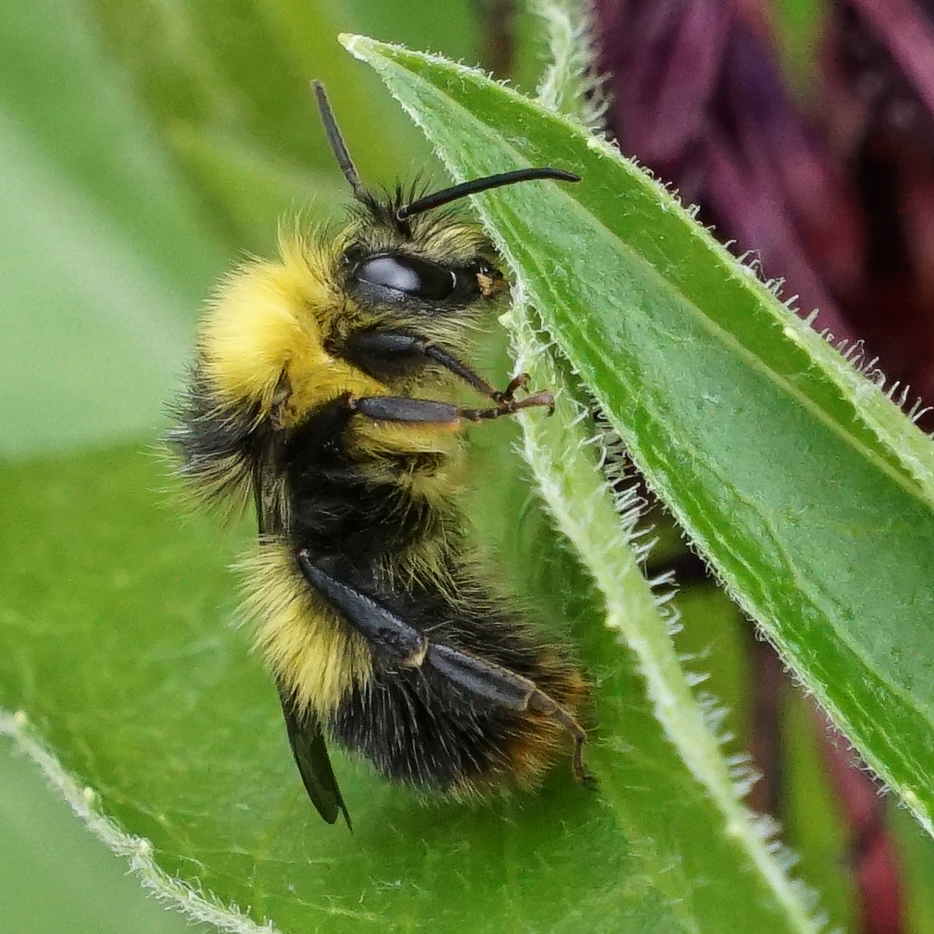
Paul writes: at the start of the new year I get to thinking about spring and when the first hibernating insects will appear. Some of the most visible starters are bumblebees. Despite its name the Early Bumblebee (Bombus pratorum) is not necessarily the first to appear but it usually awakes from hibernation in early March, or even February in southern parts of England. Nests are shorter lived than other bumblebees, about 14 weeks, so males start to emerge in June. Sometimes they can have two broods, I have seen these bees feeding on flowers in the middle of October. The easiest way of distinguishing these from other bumblebees is the red tail, which is quite small and orangey compared to that of the red-tailed bumblebee. They are also smaller than other bumblebees. Females, workers and males are similarly coloured apart from the yellow hairs on the face of the male, which can be seen in the picture. This was photographed in my garden, in North Yorkshire, on 6 June 2017.
Early Bumblebees are common and widespread throughout the UK and occur in most gardens wherever there are suitable flowers. In hedgerows, I usually find them on bramble flowers.
[registration_form]